Introduction
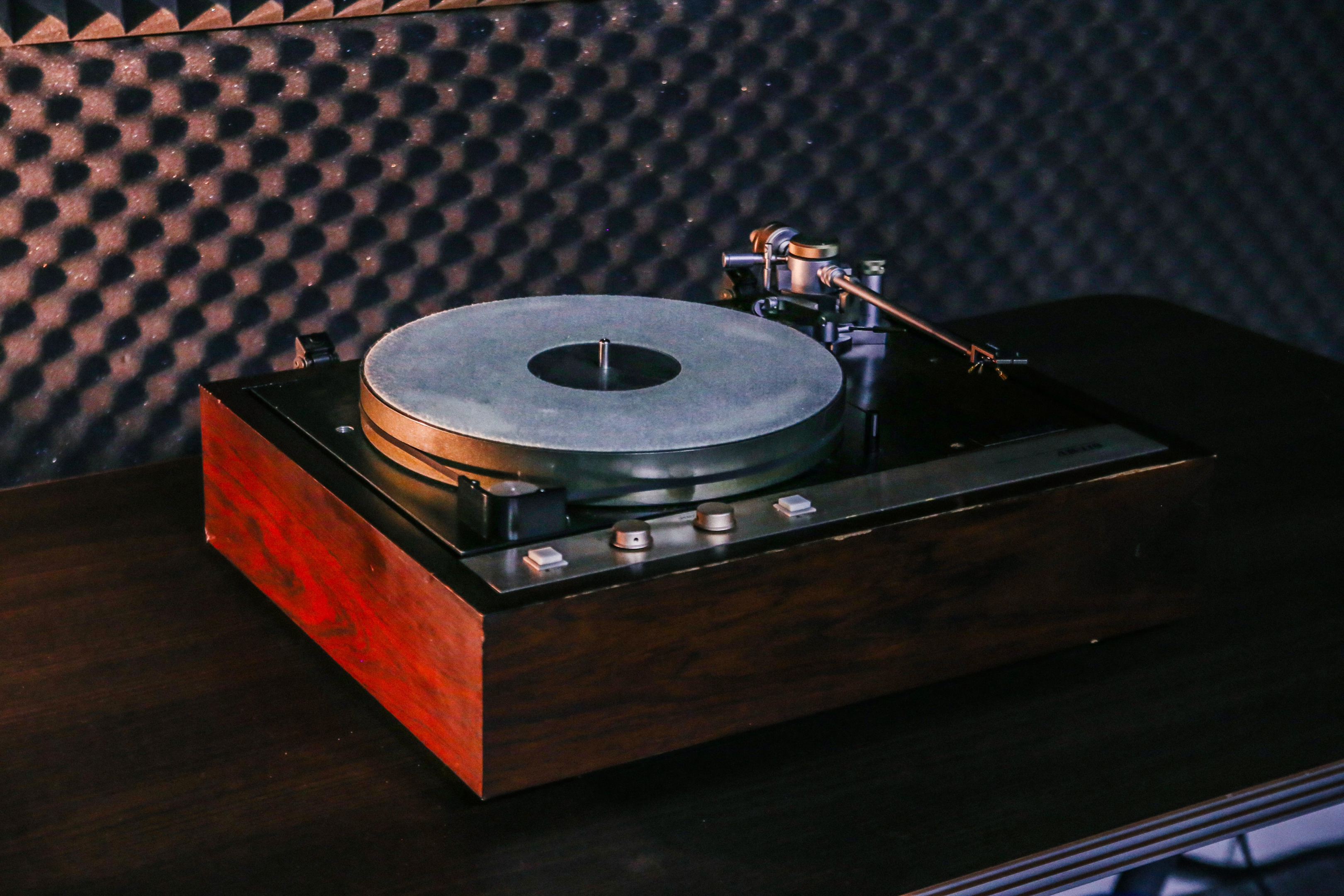
Unlock the Ultimate Vinyl Experience! Discover the Perfect Turntable Mat for Unparalleled Sound Quality and Record Protection!
In this exciting and informative guide, we'll take a deep dive into the captivating realm of turntable mats. Prepare to be dazzled as we explore the diverse array of mats available in the market and uncover their unique features that will surely elevate your vinyl listening experience. By unlocking the secrets of each type and discovering their individual charms, you'll be empowered to make an enlightened decision that perfectly aligns with your personal needs and preferences. So, fasten your seatbelts and get ready for a thrilling journey into the enchanting world of the best turntable mats around!
We will discuss popular options, weighing their pros and cons in terms of sound isolation, vibration absorption, and anti-static properties. Each type offers unique benefits, and by considering factors, you can narrow down your choices to find the perfect match for your setup.
We will provide valuable insights on assessing compatibility between turntable mats and turntable platters, ensuring proper fitment for effective performance. Proper installation techniques will also be covered, guiding you step-by-step through the process to ensure a hassle-free experience.
We will touch upon the importance of regular maintenance and cleaning to keep your turntable mat in optimal condition. By implementing proper care practices, you can extend the lifespan of the mat and minimize any negative impact on your records.
Remember, selecting and installing the perfect turntable mat is a crucial step in enhancing your vinyl playback experience. By following the advice and recommendations provided in this guide, you can achieve improved sound quality while safeguarding your vinyl collection.
Understanding Turntable Mats
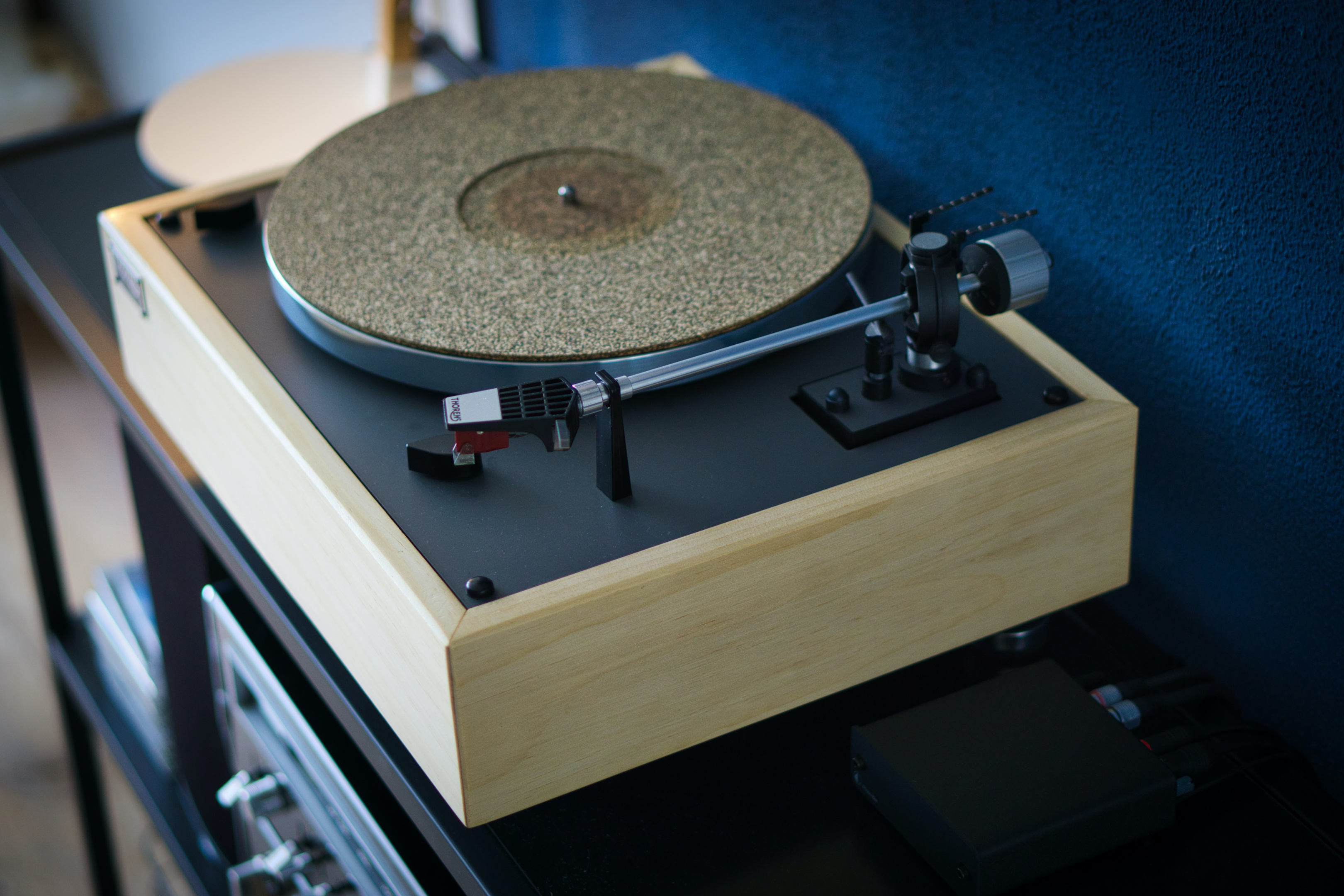
A turntable mat is a crucial component that sits on the turntable platter and provides a stable surface for your vinyl records. They come in various materials, including cork, leather, rubber, and felt. Each material has its own unique properties that can affect sound quality and record stability.
Also check out: Looking for the best turntable cartridge to enhance your vinyl listening experience? Check out this comprehensive guide on the top turntable cartridge options for superior sound quality.
Benefits of Using a Turntable Mat
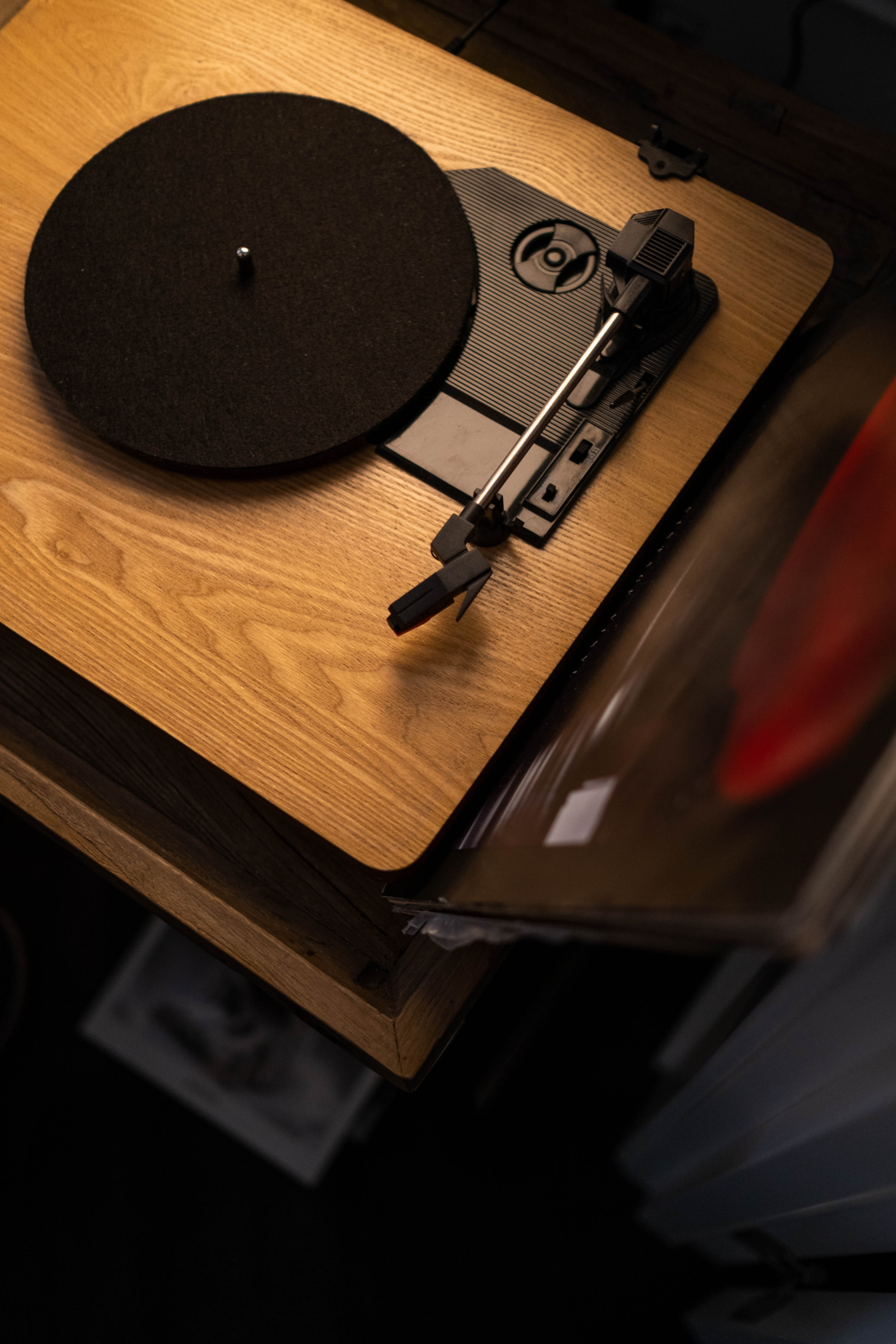
Using a turntable mat offers several benefits that contribute to an enhanced vinyl listening experience.
A turntable mat helps isolate your records from external vibrations. When a record is placed on a turntable, it is susceptible to vibrations caused by various factors such as footsteps, speakers, or nearby appliances. These vibrations can negatively impact the sound quality by introducing unwanted noise and distortion. By using a turntable mat, the vibrations are absorbed, ensuring that the stylus maintains better contact with the grooves on your record. This results in improved sound quality, with clearer and more accurate reproduction of the music.
A turntable mat reduces static electricity, which is a common issue in vinyl playback. Static electricity can cause unwanted crackling noises or pops during playback, affecting the overall sound clarity.
The presence of static charge on the surface of the record also attracts dust and other airborne particles, further degrading the sound quality. By using a turntable mat, static electricity is minimized, ensuring clean playback without the interference of static-related issues.
Turntable mats provide a cushioning effect that protects your vinyl records from scratches and wear. Vinyl records are delicate and can be easily scratched if placed directly on a hard surface.
The soft and slightly padded surface of a turntable mat creates a protective layer between the record and the platter, minimizing the risk of scratches and preserving the condition of your vinyl collection. This cushioning effect becomes particularly important when handling older or valuable records that may be more prone to damage.
Incorporating a turntable mat into your setup is a simple yet effective way to enhance your vinyl listening experience and prolong the life of your records.
Factors to Consider When Choosing a Turntable Mat
When selecting a turntable mat, there are several factors to consider. Thickness, material, and compatibility with your turntable platter size all play crucial roles in determining the mat's performance.
Thickness: The thickness of the turntable mat is an important consideration as it directly affects its ability to dampen vibrations. Thinner mats tend to provide more effective vibration control, reducing unwanted resonance and improving sound quality.
Thicker mats, on the other hand, may not offer the same level of vibration control and can potentially interfere with the alignment of the tonearm.
It is essential to find a balance between thickness and practical use for optimal results.
Material: The material of the turntable mat can have a significant impact on sound reproduction and overall performance. Different materials possess varying characteristics that affect vibration dampening, static control, and record contact.
Compatibility with Turntable Platter Size: Ensuring compatibility between the turntable mat and the turntable platter size is essential for proper alignment and performance.
Measure the diameter of your turntable platter to select a mat that matches the size accurately. A properly sized mat will fit snugly on the platter, providing stability and allowing for optimal record playback.
By carefully considering these factors - thickness, material, and compatibility with your turntable platter size - you can select a turntable mat that enhances sound quality, reduces vibrations, and provides an optimal listening experience.
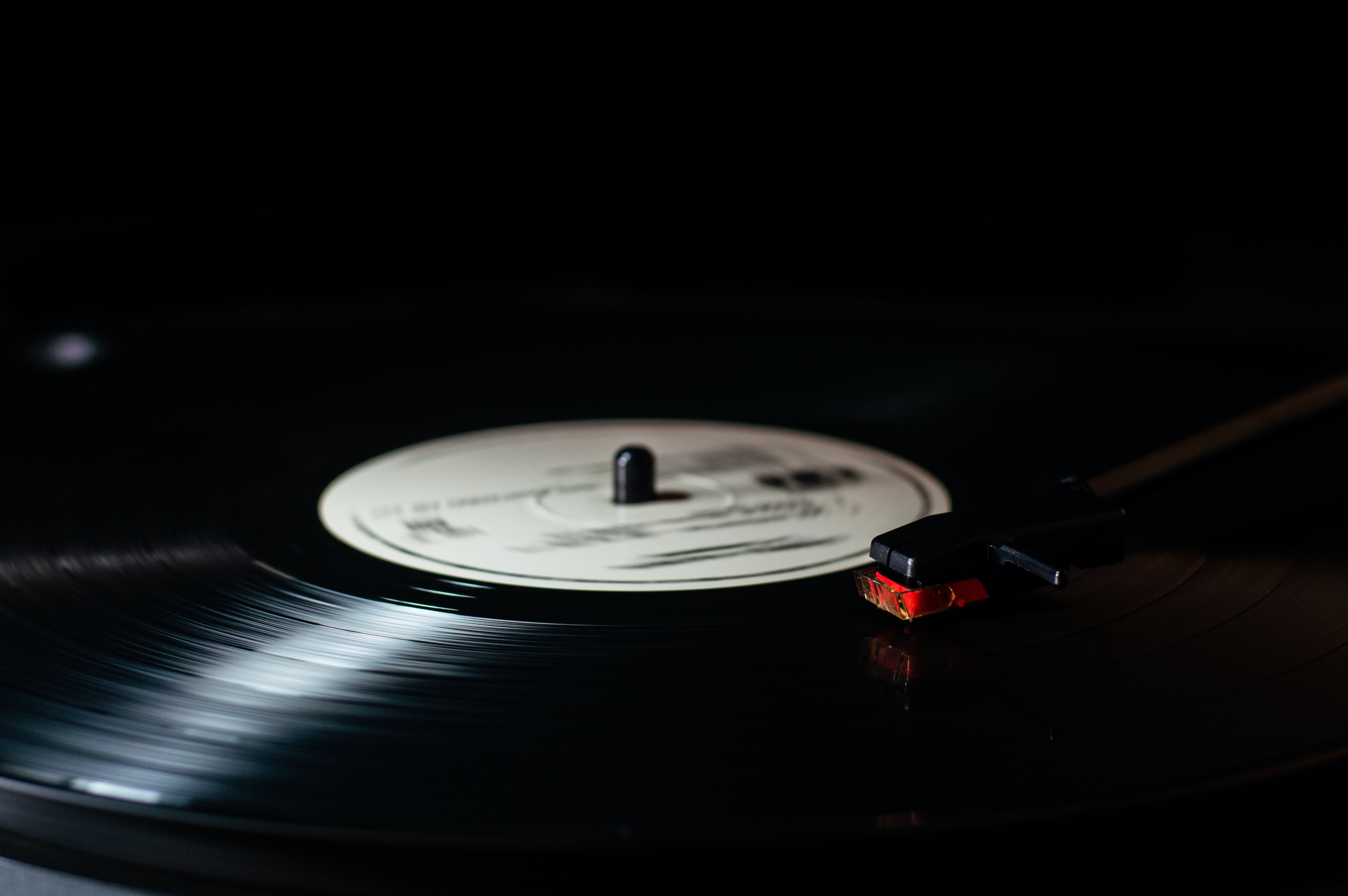
Also check out: If you're curious to know more about different types of turntable mats and how they can enhance your vinyl experience, check out this informative guide: Exploring Different Types of Turntable Mats. Happy reading!
Types of Turntable Mats
Cork Mat
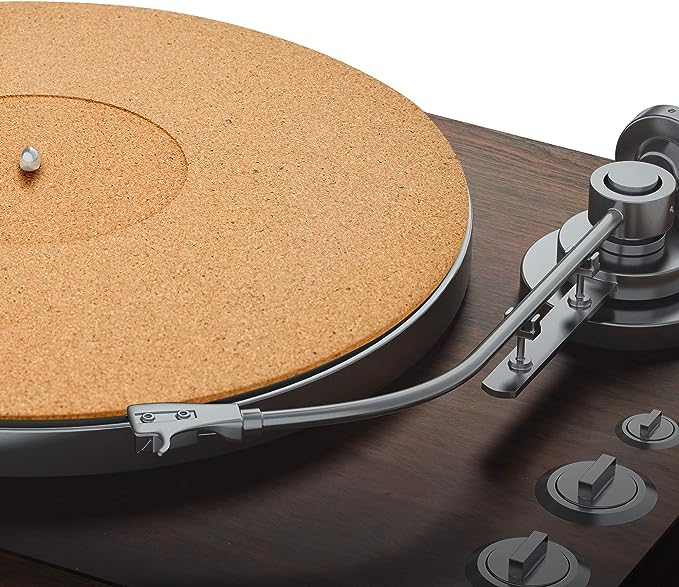
Cork mats are highly regarded among audiophiles for their exceptional sound isolation properties. These mats excel in reducing resonance and absorbing excess vibrations, resulting in a cleaner and more detailed sound reproduction. The unique cellular structure of the cork provides effective soundproofing by minimizing sound transfer and echo.
One of the key advantages of cork mats is their ability to reduce unwanted resonance. When a turntable is in use, vibrations can be transmitted through the platter and affect the sound quality. However, the cork's natural elasticity and structure help dampen these vibrations, preventing them from resonating and distorting the audio output. As a result, listeners can enjoy a more accurate and faithful reproduction of their favorite music.
Cork mats offer excellent durability, making them a reliable choice for long-term use. Unlike some other mat materials, cork does not deteriorate easily and can withstand regular playback without losing its effectiveness.
This durability ensures that the mat will continue to provide reliable sound isolation properties for an extended period.
In addition to sound isolation, cork mats also possess anti-static properties. Cork's natural resistance to static electricity helps minimize these issues, ensuring a cleaner and more enjoyable listening experience.
Cork's versatility extends beyond its sound isolation properties. It is a lightweight material that is also fire-resistant, water-resistant, and weather-resistant.
This resilience makes cork mats suitable for various environments and ensures that they maintain their performance even in challenging conditions.
Rubber Mat
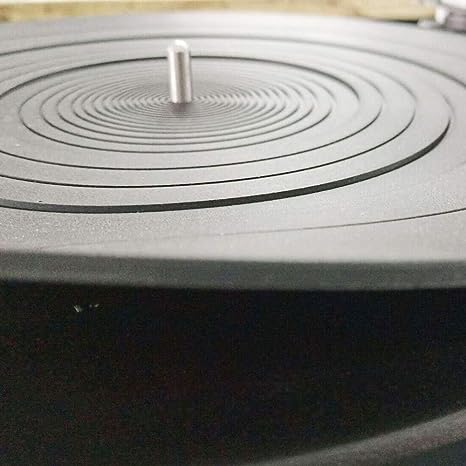
Rubber mats offer several advantages when it comes to turntable setups. They provide excellent grip, ensuring that the vinyl record stays firmly in place during playback. This is especially important for DJs and those who engage in scratching or other rhythmic movements on the turntable. The grip provided by rubber mats helps prevent slipping and ensures accurate tracking of the stylus.
Rubber mats excel in damping vibrations and minimizing unwanted resonance.
Rubber, as a material, has inherent properties that absorb and dampen vibrations, resulting in a more focused and detailed audio experience.
However, it's worth noting that rubber mats may attract dust more easily compared to other materials such as cork or felt. Dust particles can accumulate on the mat's surface and potentially transfer onto the vinyl record during playback.
Regular cleaning of the rubber mat is necessary to maintain its performance and prevent dust-related issues.
Felt Mat
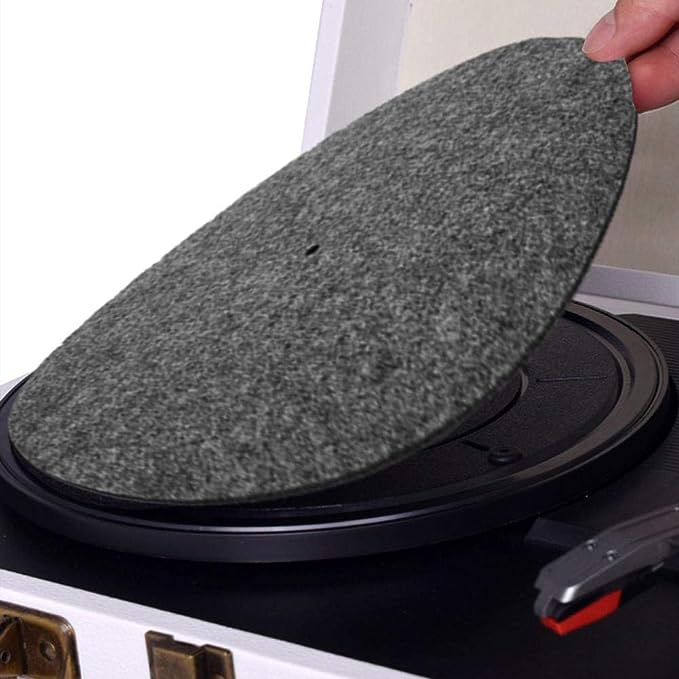
Felt mats offer a smooth surface for your records, making them a popular choice among vinyl enthusiasts. These mats provide a soft cushioning effect, ensuring that your records stay in place during playback and minimizing the risk of slippage or damage.
One of the advantages of using a felt mat is its ability to absorb vibrations and reduce unwanted resonance. The soft nature of the material helps dampen any vibrations transferred from the turntable platter, resulting in improved sound quality and enhanced clarity.
The cushioning effect also helps protect your records from potential scratching or damage.
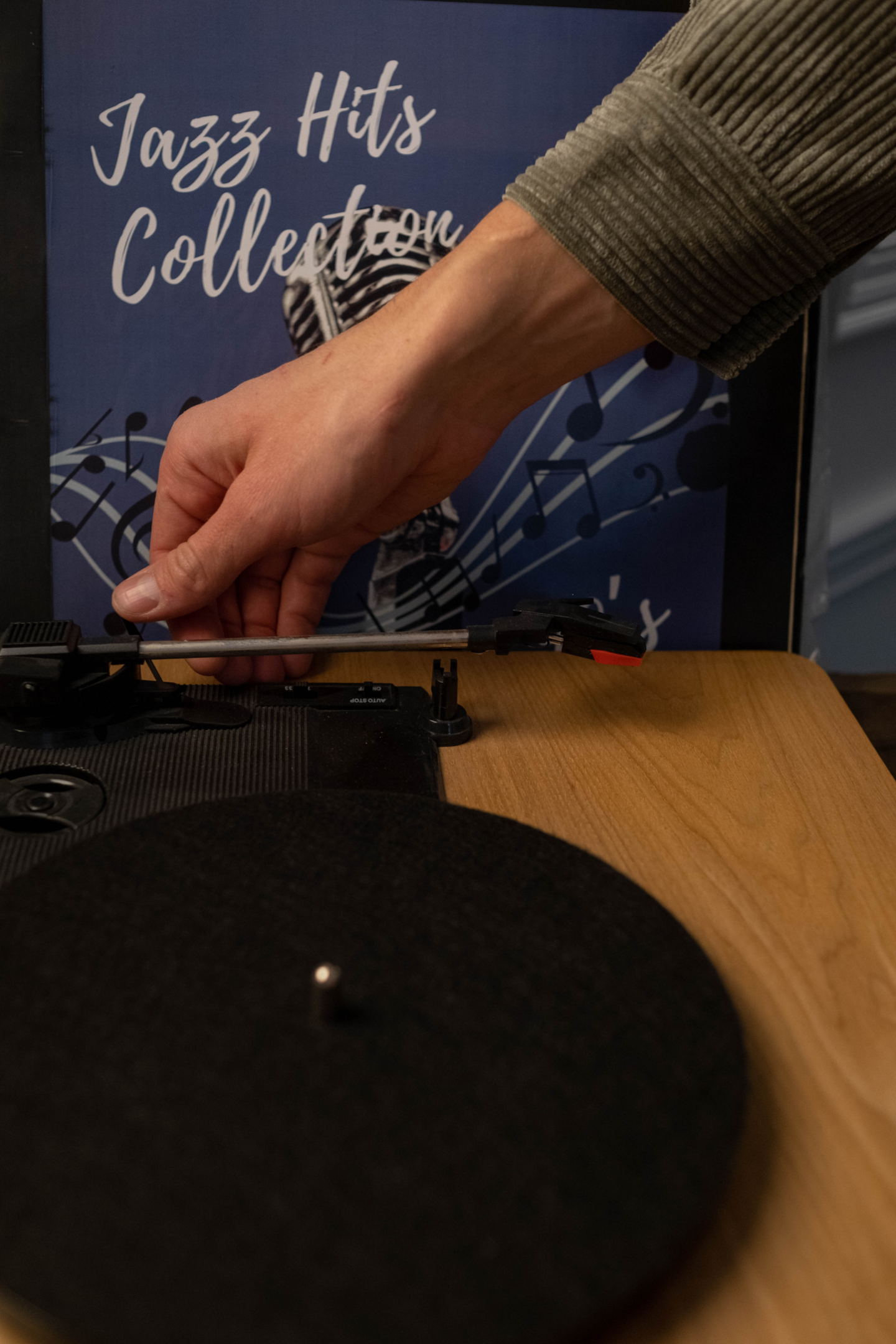
However, it's important to note that felt mats may have a slight dampening effect on high-frequency details. Due to their soft and absorbent properties, felt mats may slightly mellow or attenuate the higher frequencies, which can lead to a warmer, more rounded sound signature. This can be a desirable characteristic for some listeners who prefer a smoother tone, but it's worth considering if you prioritize high-frequency detail and transparency in your audio reproduction.
Despite this potential trade-off, many users find that the benefits of using a felt mat, such as improved stability, reduced static, and protection for their records, outweigh the minor loss of high-frequency detail.
It's worth mentioning that the perceived impact on sound can vary depending on the specific turntable setup, cartridge, and personal listening preferences.
Assessing Compatibility with Turntable Platter Mats
Before purchasing a turntable mat, it's essential to ensure compatibility with your turntable platter. Here are some important considerations to keep in mind:
Measure the platter's size: Turntable platters come in various sizes, such as 12-inch or 7-inch. It's crucial to measure the diameter of your platter to choose a mat of the correct size. Using a mat that doesn't fit properly can lead to alignment issues and affect the overall performance of your turntable.
Consider the mat's thickness: The thickness of the turntable mat also plays a role in maintaining proper alignment and avoiding interference with the tonearm. Some mats may be thicker than others, and it's important to choose a mat that doesn't cause any imbalance or affect the tracking force of the tonearm.
By ensuring compatibility between the turntable mat and platter, you can optimize the performance of your turntable and achieve the best sound quality possible.
It's worth checking the manufacturer's recommendations or consulting with experts to find compatible options for your specific turntable model.
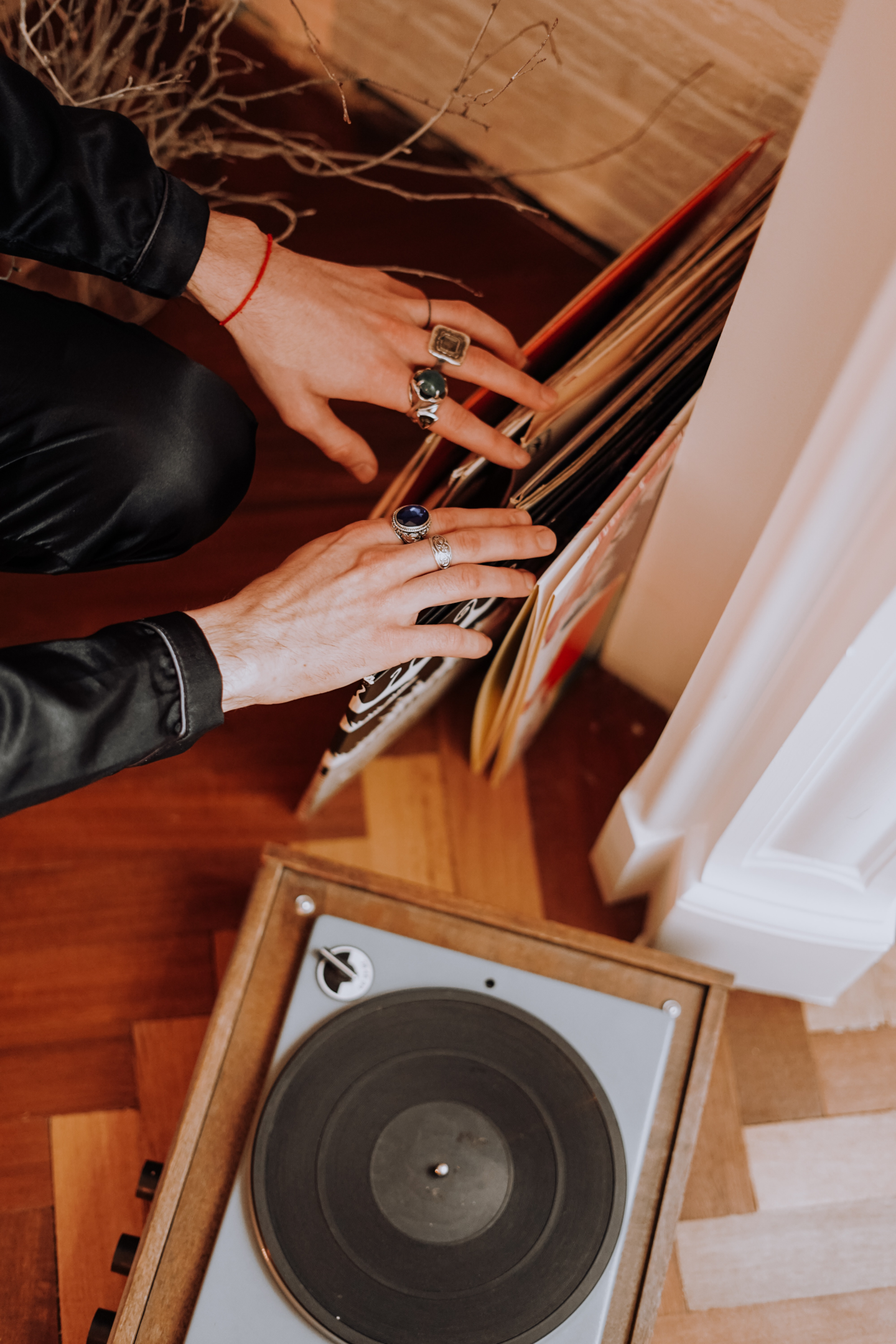
Installation Steps
Installing a turntable mat is a relatively simple process that can be done with a few easy steps. Here's a detailed guide on how to install a turntable mat:
Remove the old mat (if applicable): If your turntable already has a mat in place, carefully lift and remove it from the platter. Some turntables may not come with a mat, in which case you can skip this step.
Clean the turntable's platter surface: Before placing the new record mat, it's important to clean the surface of the turntable's platter. Ensuring a clean platter surface will provide optimal contact between the mat and the record.
Place the new mat onto the platter: Take the new turntable mat and align it with the spindle hole in the center of the platter. Gently lower the mat onto the platter, making sure it sits flat and evenly covers the entire surface. Pay attention to any alignment markings or labels on the mat, if applicable, and position it accordingly.
Ensure a secure fit: Once the mat is in place, ensure that it sits securely on the platter. It should not be loose or prone to movement during playback.
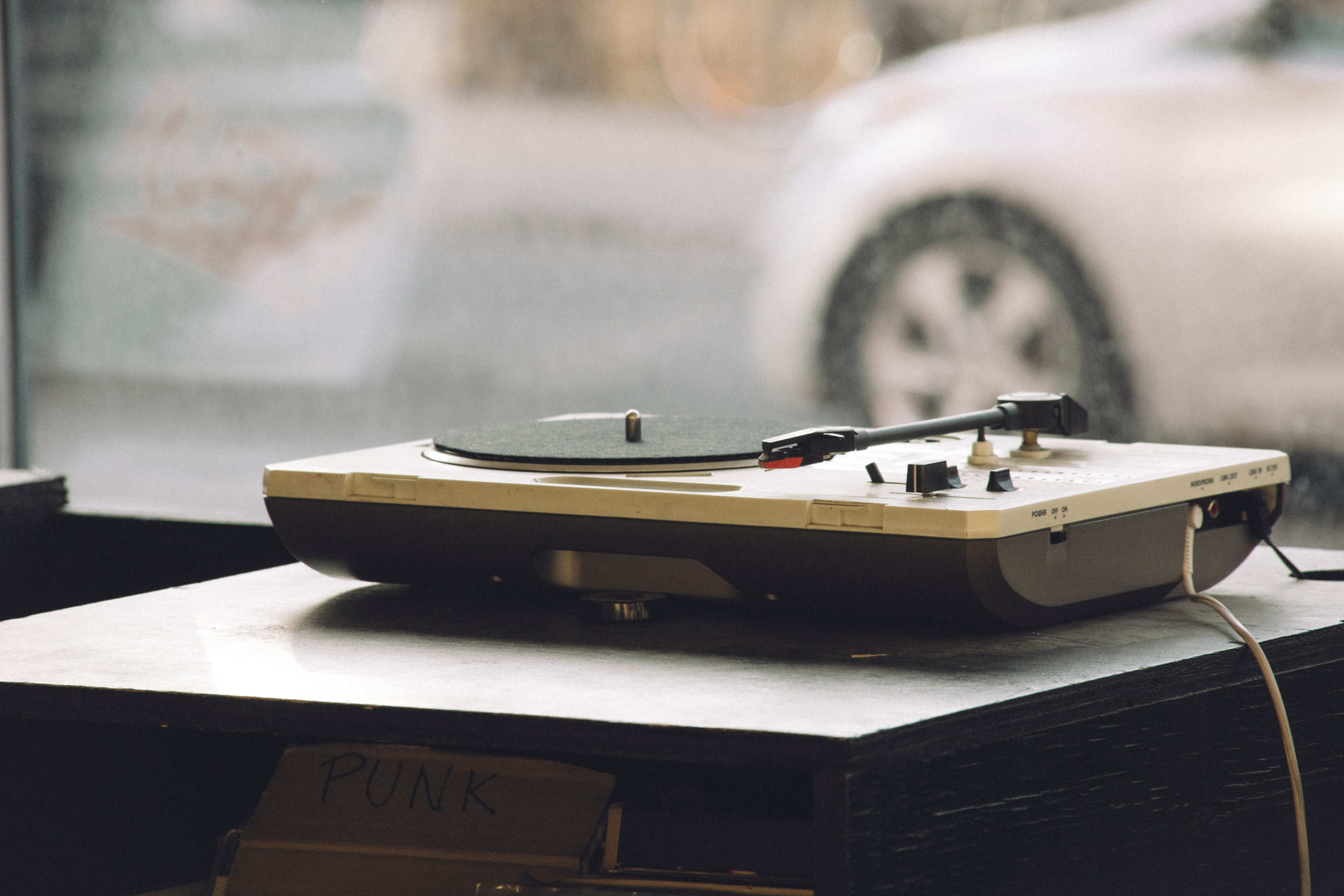
Maintaining and Cleaning the Turntable Mat
To maintain optimal performance, regularly clean the turntable mat. Follow the manufacturer's instructions for cleaning based on the mat's material. Use a soft brush or a lint-free cloth to remove dust and debris. For stubborn dirt, consider using a mild cleaning solution recommended for your specific mat material.
Conclusion
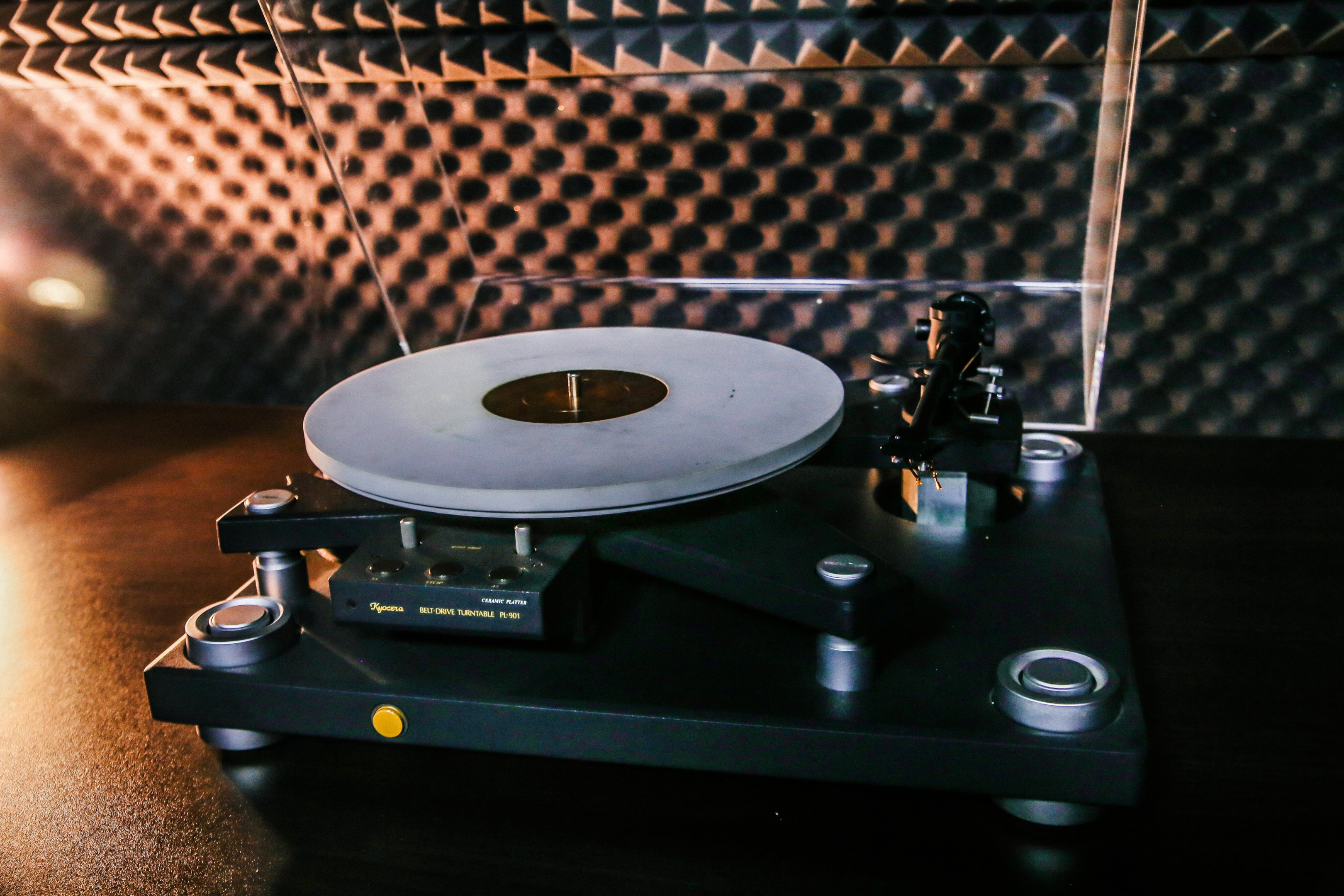
Selecting and installing the perfect turntable mat is crucial for achieving optimal sound quality and preserving the lifespan of your vinyl records. Consider factors such as material, thickness, and compatibility with your turntable platter. By following these guidelines, you can enhance your vinyl listening experience and ensure long-lasting performance from your turntable setup.
